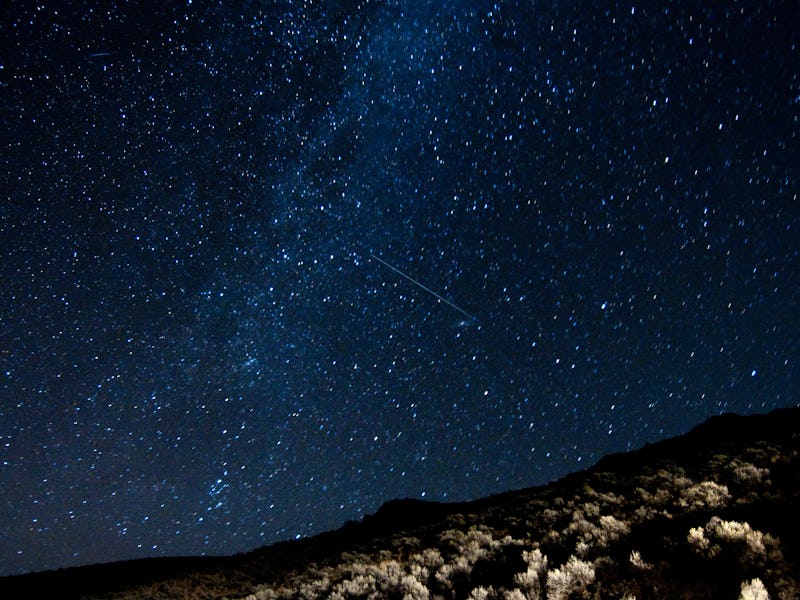A User's Guide to the Draconid Meteor Showers on Thursday and Friday Night
Everything you need to know to catch this yearly event.

Patient sky watchers could catch a few shooting stars Thursday and Friday evening, thanks to the annual Draconid meteor shower.
The shower appears to radiate from the head of the Draco, or Dragon, constellation. But the shooting stars could appear anywhere in the sky, so no need to worry if you can’t find the dragon.

The dragon may breathe fire this week.
The shower happens every October, when the Earth passes near dust trails left by the 21P/Giacobini-Zinner comet in its 6.6-year orbit of the sun. The intensity of the show depends on how close the Earth’s atmosphere comes to these filament streaks of cosmic debris. Predictions are that this year will be nothing out of the ordinary — maybe 10 or 20 shooting stars an hour under peak viewing conditions.
But the cool thing about the Draconids is that occasionally the Earth’s atmosphere collides head on with a dust trail, resulting in an outburst of activity up to thousands of meteors per hour. Particularly insane storms were witnessed in 1933 and 1946.
The 2011 Draconid shower, as seen from Spain.
“I counted 200 meteors in two minutes, and then counting became impossible,” reads one account of the 1933 event. “The fire-stars became as thick as the flakes of a snowstorm. Instead of twos and threes they came in flocks and gusts. The sky was thick with them wherever one looked.”
In 2011, the meteors were multitudinous, though they certainly didn’t reach 1933-level insanity:
The meteors are hard to see in this time-lapse video, which goes to show how hard they are to witness and capture, even in good conditions:
Still, a stargazer with a bit of patience could see a good show this week.
There are a few reasons to be optimistic about this year’s event. For one, the moon will appear only as a slim crescent, so if skies are clear any meteors that appear should be bright. Also, the best time to watch is early evening, when Draco is highest in the sky, so there’s no need to stay up too late or rouse yourself in the wee hours.
What To Do: Head out as far away from city lights as you can manage as soon as the sky gets dark. Bring something warm and something comfortable to sit or lie on. Then look up. Worst case scenario, you spend a couple of hours gazing into the wonder of our universe. Best case, you catch one hell of a show.